Appleseed (2004)
Introduction
I remember watching the original Appleseed a couple of years ago, and being distinctly deflated by the experience. The 1988 movie was hardly the sort of thing you would expect from the pen of Masamune Shirow. The adaptation was short, ephemeral and wholly unimpressive. The runtime didn't let the story develop, the characters were ciphers, and a distinct lack of imagination meant a future utopia that looked shockingly like 1980s Japan, with a whole lot of primary colours. On top of that, Manga Entertainment's profanity laced dub was a poor reflection of the original language track, and the dubtitles meant that you had to put up with it no matter what language you watched it in. The only impressive aspects were the mecha designs. However, this is Masamune Shirow we're talking about, the creator of the mega-popular Ghost In The Shell franchise. He's definitely someone worth giving a second chance to, and apparently Shinji Aramaki (Bubblegum Crisis) thought so too, as in 2004 he directed a new version of Appleseed. I waited for an appropriate sale to sample it (once bitten…), and the new version thankfully bears no resemblance to the original except in the superficial.
2004's Appleseed also marked a revolution in Japanese animation. Prior to this film, you had 2D animation and 3D animation, and never the twain would mix. Or rather there was a limit on what could be accomplished with traditional anime. Since the late nineties, practically all animation in Japan has been accomplished digitally, with 2D 'cel' animation dispensing with the acetate and being put together quickly, efficiently and cleanly in the bowels of mainframes. This also allows the incorporation of 3D CG elements, although the characters remain resolutely 2D. That limits you in terms of what you can accomplish. The sweeping moves and free camera angles of the sort of films that come from Pixar and Dreamworks are prohibitively time consuming and complex when you have 2D elements in the frame. No matter how intricate your mecha design or CG world, when you have a 2D character on screen, you basically have to lock the camera off and keep a fixed frame, or pre-plan your camera moves down to the smallest detail. It would all be so easy if you had 3D characters to go with your 3D world, but getting 3D characters to look like traditional anime was the stumbling block before Appleseed. The thing is that 3D rendered graphics, no matter how detailed or intricate just don't look like anime. Early attempts like A.Li.Ce and Yuki Terai: Secrets, looked like little more than extended computer game cut scenes, albeit of exceptionally high quality, while to achieve the look of Final Fantasy would take the financial clout of a small republic, or Sony. The sort of budget that an anime feature gets is rarely even a tenth of that sort of money.
The answer was toon-shading, or cel-shading. It isn't a new idea, and like pretty much everything cutting edge in computing, it came from the gaming industry, where to make certain game characters look cuter, they were designed to look as if they were animated cartoon characters instead of CG creations. It was even used to wonderful effect in Ghost In The Shell: Stand Alone Complex, where vehicles and machines were created as 3D CG models, but were coloured as if they were part of the animation, to fit in with the 2D elements. Appleseed turns this philosophy on its head. The world and the mecha are all CG, but now the characters are 3D as well. To maintain that tradition of 2D animation, they are cel-shaded to look like traditional 2D characters, but the camera now has the same freedom of movement as any other 3D animation, the frame rate remains constant, and the director is now free to create his vision as he sees fit. It's 3D animation that looks like traditional anime. Is it the new way of doing things, or an evolutionary dead end?
The final war has happened and the world has been devastated. The few human survivors eke out an existence battling rogue cyborgs, amid the crumbling ruins of what was once a great civilisation. That's except for in the city of Olympus, the final redoubt of humanity. It's a utopia, mankind's last haven, where the community is designed to weed out the negative aspects of humanity that keep repeatedly dooming it to destruction. Gaia, a powerful AI, governs the city along with a council of elders, and the population is 50% human and 50% bioroid. Bioroids are artificially created beings, chimera that are smarter and more emotionally stable than humans, and administering the everyday running of the city falls to them. Unfortunately utopia isn't to everyone's liking, and not everyone tolerates the existence of bioroids. This is especially true of the military led by General Uranus. To counter this faction, the city's ESWAT police force has itself grown into a second military, and they are always on the lookout for potential recruits. Which is why mercenary Deunan Knute was 'rescued' from the wasteland.
Waking up in Olympus, she has a bittersweet reunion with her lover Briareos. Briareos was mortally wounded in battle, but was transformed into a cyborg by the elders of Olympus and recruited into ESWAT. He's no longer the man Deunan remembers, and it isn't just the mechanical body. He's now behaving oddly, keeping his distance. The city's existence teeters on the edge of a precipice. Human resentment of bioroids is increasing, as are acts of violence against them. Bioroid existence is itself unnatural, they are unable to reproduce, are forced to have regular rejuvenation treatments to avoid premature death, and have the threat of a lethal virus reinforcing their pre-programmed obedience to humans. The elders and Gaia see this tipping point coming, and are being forced to alter the balance of Olympus. It seems revolution is inevitable, and Deunan's arrival may just be the match that lights the fuse. But salvation lies in the mysterious Appleseed, and to find it, Deunan will have to journey into her past.
Picture
A 1.85:1 anamorphic transfer of a digital film, what could go wrong? Well, there is a distinct haziness to proceedings, some colour gradients, and it could be a tad clearer at times. Also there is a problem with blackness levels not being strong enough, but as it's mentioned in the commentary, it's probably not a transfer issue. On the whole the transfer quality isn't going to affect your viewing experience though.
As for the animation, well it certainly is groundbreaking. It has the fluidity and smoothness of most 3D digital animation, the opening sequence is a breathtaking burst of intense action that brings out the best of the medium, and immediately the possibilities of camera movement and bullet time are put into effect. With it being an experimental animation though, certain problems are apparent. The backgrounds and most of the mecha are rendered CG, and look as astounding as you would expect with some 15 years of movie CG magic to build on. The decision to toon-shade the characters certainly pays off in making them look more anime like, and somewhat counter-intuitively more lifelike in process. They are easier to accept now than traditional 3D CG characters. But, they don't always fit in well with the CG backgrounds, standing out from their surroundings, ironically as if they were green-screened into the film. Also, while the action is amazing, the quieter character moments reveal the limits of the technology. I found the faces to be a little off-putting initially, and I never felt as if the mouths were animated quite right. Then the animation would throw in something as amazing as dust motes glittering in a sunbeam streaming through a window, and I just had to forgive its deficiencies, including the occasional rendering glitch indicative of a lower than Pixar level budget.
Sound
The animators made the first six minutes of the movie as a test piece, and burned DVDs and sent them off to random musicians to see who would be inspired by the imagery. Which is why this Japanese movie has exotic names like Paul Oakenfold and Basement Jaxx attached to it. The Basement Jaxx opening theme Good Luck is surprisingly well suited for the film, while the techno soundtrack punctuates the action well. There are soaring orchestral moments when the film requires as well.
You get a choice of DD 5.1 and DTS Japanese, with DD 5.1 English, along with optional translated English subtitles. There is some serious use of surrounds for the action sequences and music, and this is a fully immersive environment. Naturally I recommend the original language track as always, but the English dub is just as impressive, and I can't fault what I sampled of it.
Extras
This is a nice 2-disc set from Optimum with an appreciable smattering of extras.
Disc 1 holds the movie, along with the audio commentary from director Shinji Aramaki, and Producer Fumihiko Sori. Naturally with such a revolutionary film they have plenty to say about striking a balance between realism and anime, about inventing a new way of making movies on the fly, and the technicalities of toon-shading. It's a verbose info-filled track, which may need the occasional skipping back to re-read the subtitles, and it's surprisingly easy to listen to given how much of the focus is on the technical aspects of the film.
Disc 2 has the rest of the extras, most notably a 36-minute featurette called The Birth Of 3D Live Anime. The cast and the crew talk about bringing the manga to the screen (conveniently forgetting the OVA), and there is a lot of behind the scenes footage taking us through the production imagery, the CG creation and the motion capture of actors to bring the characters to life. It's notable that three actresses, voice, motion and stunts, were cast for the role of Deunan. An interesting sequence is that of facial capture. The voice actresses were filmed speaking their lines to be used as animation references for the CG characters. However, they had to redub their lines afterwards, losing the perfect lip sync, and in my mind contributing to the oddness of the look of the characters.
Design Archives offers slideshow galleries of concept art, intermediate CG footage and the final footage reflecting the work of the various designers that worked on the film, including director Shinji Aramaki himself, Masaki Yamada, Nobuhito Sue, Takeshi Takahara, and Atsushi Takeuchi.
Appleseed Info offers a glossary of the Appleseed world, looking at key words, character profiles and Mecha Info.
There is an image slideshow gallery looking at the Characters and the Mecha.
There are text staff profiles for director Shinji Aramaki, manga creator Shirow Masamune, producer Fumihiko Sori, Yusaku Toyoshima and Yasuhio Ohtsuka who worked on the CG, and composer Tetsuya Takahshi.
Finally there are the sole US, and two Japanese theatrical trailers to enjoy.
Conclusion
There is that initial thrill of that action-filled opening sequence, an almost clichéd Matrix-esque burst of violence, stunningly choreographed and painstakingly created. It's a jolt to the audience spine, and stunned me long enough to coast into the film on sheer momentum. It's just that after that opening, I began to nitpick the look of the film, started counting the glitches, realised how odd the characters appeared, and how they didn't quite fit into the backgrounds. Then, about a third of the way in, the film 'clicked' for me. All of a sudden I wasn't grouching about the look of the film, I was into the story, I was getting the characters, I was fully engaged in the thrill ride that was about to take place. Which is exactly as it should be. Animation has always required a little suspension of disbelief, and if the story is strong enough, you always end up ignoring the drawbacks of the medium and enjoying the film for what it is. Appleseed is at heart a good, exciting story, and that's something that sells it to me as a movie, not pixel perfection, motion capture or texture mapping.
Appleseed is certainly an improvement over the original OVA, the story is much more interesting, even though it covers much the same ground, and the characters are much more layered than before. On the other hand, Appleseed doesn't offer much that hasn't been seen before in cinema, the post apocalyptic world, the shining utopia, the conflict between humans and bioroids echoing the philosophy of films like Blade Runner. The immediate improvement over the OVA is seen in the start of the film, which serves as more of an origin story. Deunan Knute is the feral warrior picked from a wartorn wasteland to serve the security services of Olympus. At the same time she is reunited with lover Briareos, who since their last meeting has almost died, and been turned into a cyborg. There is instantly a tension between the two, wariness as they get used to the new set of circumstances, and a certain mistrust as Briareos behaves unexpectedly, keeping a distance between the two. There is a much better exploration into this future utopia, the artificial balance created when Bioroids and humans live side-by-side, and the resentment that causes in some quarters. Bioroids occupy the same space in this film as Replicants did in Bladerunner, although a little more benign. They have the same limited lifespans, are superior to humans, and even serve as administrators over humans. Yet they are unable to reproduce, and their emotions are limited by their programming to keep them docile and un-aggressive.
Of course there is that usual polemic about humanity and its flawed stewardship of the planet, its unlimited capacity for destruction, and its unsuitability to inherit the Earth. While some quarters see Bioroids as perversions that will overwhelm and essentially enslave humanity in a carefully controlled utopia, others see Bioroids as the meek that should inherit the Earth, and humanity the pestilence that needs to be removed. It's the philosophical clash between the two that is at the heart of the story. Deunan is the catalyst that sets this confrontation into motion, yet at the same time she is the one who has the best chance to find the third way out of the deadlock, as she pursues the mysterious Appleseed. It's a poignant journey for her, and as such comprises the emotional strength of the film. If her reunion with Briareos isn't bittersweet enough, she has to learn about her forgotten past. Her father was instrumental in the creation of Olympus, and his DNA resides in every Bioroid in the city. Now she has to recover the memories of her childhood to understand the Bioroids better. I was already hooked to the story by this point, but the emotional arc that she goes on is enthralling, and any doubts about the animation are truly buried by how emotionally engaging the 'performance' is.
Interspersing the well-developed story and the emotional arc are the requisite action set pieces, all brilliantly animated and thrilling to watch. As well as Deunan's hand to hand combat skills; there are also mecha battles with powered suits called Landmates, a car chase, aerial battles and an explosive grand finale that will have you at the edge of your seat.
Is the animation a dead end? Apparently not, given the Appleseed Sequel and the forthcoming Vexille develop the same techniques further. The animation does take some getting used to here, and the story is certainly not original. But, it is very well told, the characters are three dimensional in every sense of the word, and the bottom line is that Appleseed is thoroughly entertaining and fun. That Manga disc of the OVA can be put to one side as just a momentary bit of unpleasantness now.
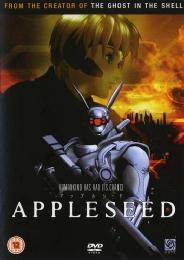
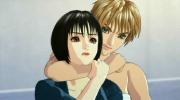
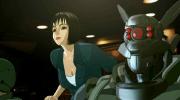
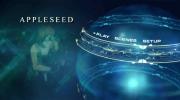
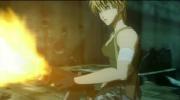
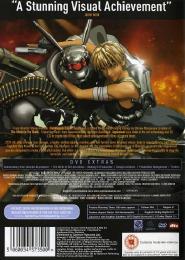
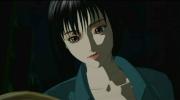
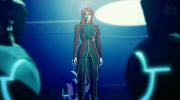

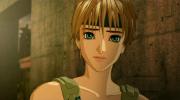
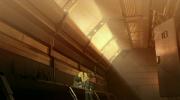


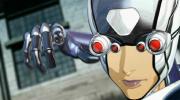
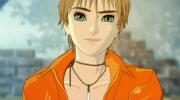
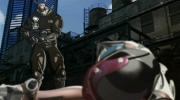

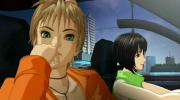
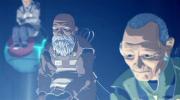
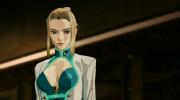
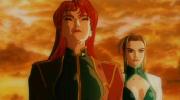


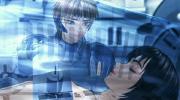
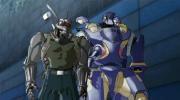
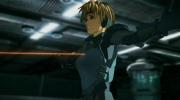

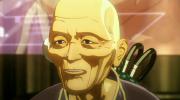
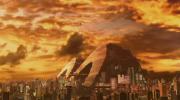
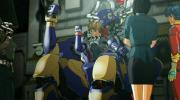







































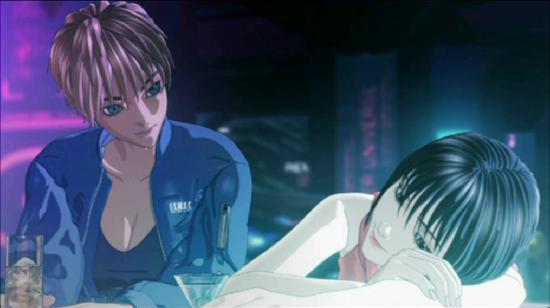


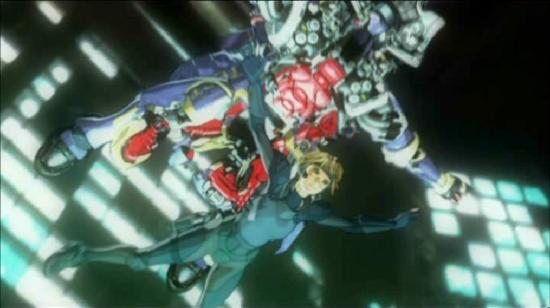
Your Opinions and Comments
Be the first to post a comment!